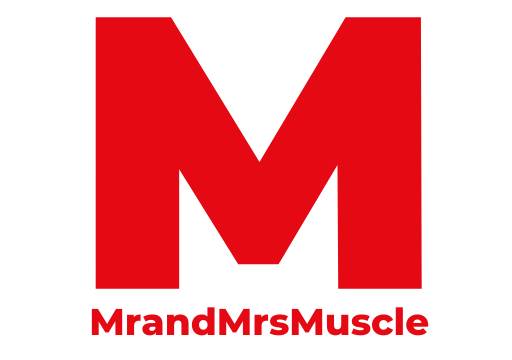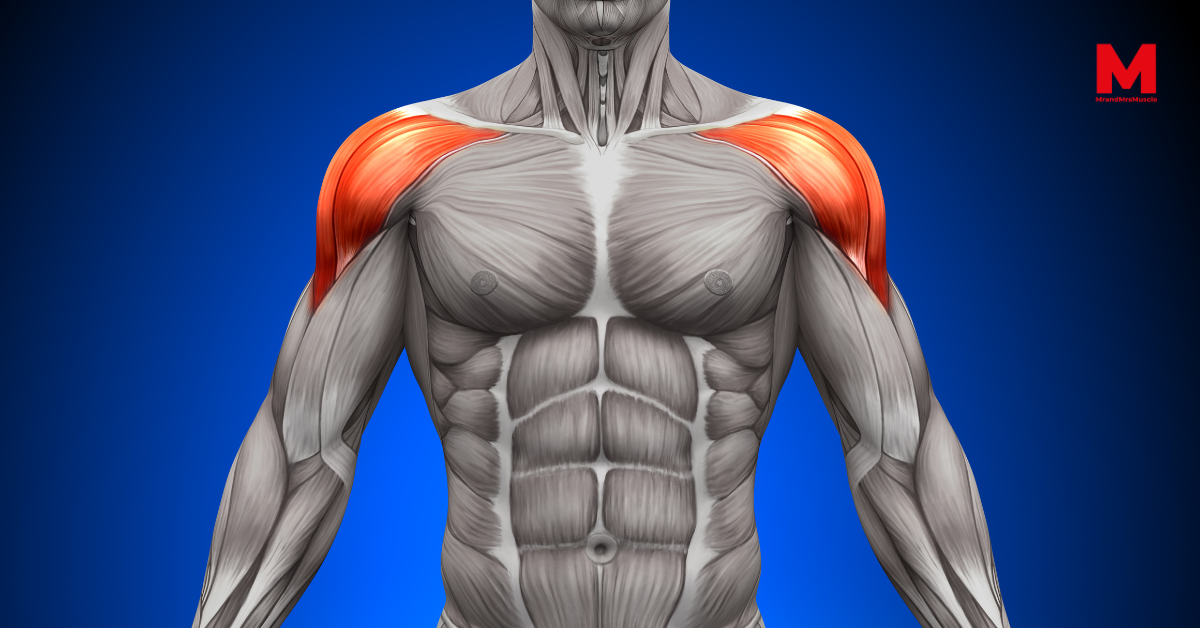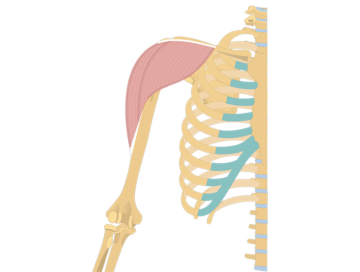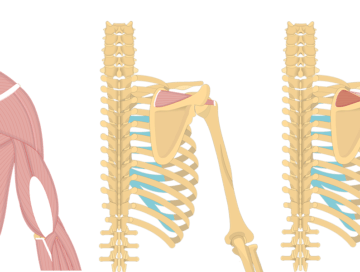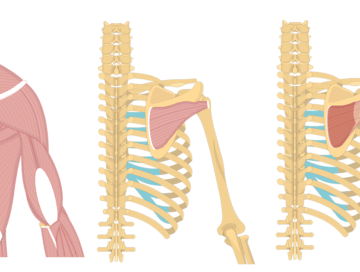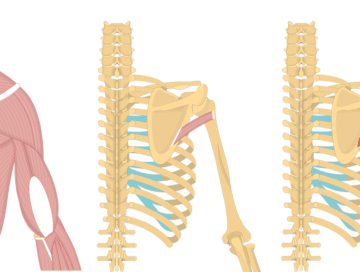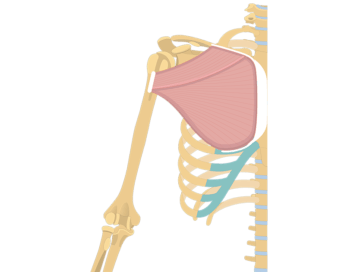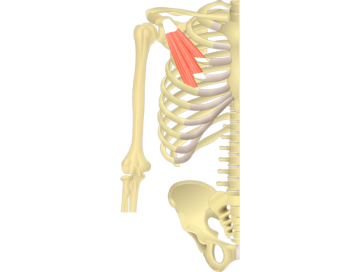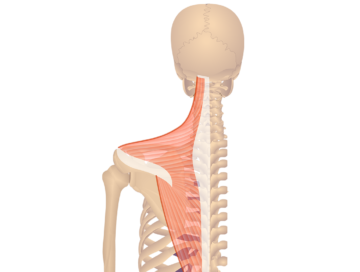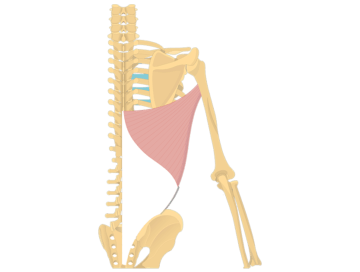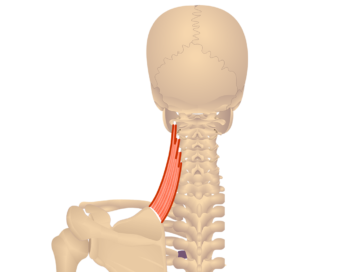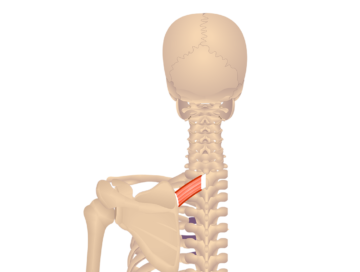Shoulder Muscles
The anterior axioappendicular muscles consist of the:
- pectoralis major
- pectoralis minor
- subclavius
- serratus anterior
The extrinsic muscles include:
- the trapezius
- latissimus dorsi
- levator scapulae
- rhomboid major
- rhomboid minor
The intrinsic muscles consist of the:
- deltoid
- teres major
- the rotator cuff
which are made up of the supraspinatus, infraspinatus, subscapularis, and teres minor.
The deltoid is a muscle located in the shoulder. It is a triangular-shaped muscle that covers the shoulder joint. The primary function of the deltoid is to abduct the arm, allowing you to lift it away from the body to the side.
The teres major is a muscle located in the back of the upper arm, beneath the shoulder. It is one of the muscles that make up the posterior shoulder girdle. The primary function of the teres major is to adduct and medially rotate the arm, which means moving the arm toward the body’s midline and turning it inward. It also assists in extending the arm backward.
The supraspinatus is a muscle located in the shoulder, specifically in the supraspinous fossa of the scapula (shoulder blade). The primary function of the supraspinatus is to initiate shoulder abduction, which means lifting the arm away from the body to the side.
The infraspinatus is a muscle located in the shoulder, specifically in the infraspinous fossa of the scapula (shoulder blade). The primary function of the infraspinatus is to externally rotate the arm, which means turning the arm outward.
The subscapularis is a muscle located in the front of the shoulder, within the subscapular fossa of the scapula (shoulder blade). The primary function of the subscapularis is to internally rotate the arm, which means turning the arm inward.
The teres minor is a muscle located in the back of the shoulder. It runs along the lateral border of the scapula (shoulder blade). The primary function of the teres minor is to externally rotate the arm, which means turning the arm outward.
The pectoralis major is a large, fan-shaped muscle located in the chest. It covers the upper part of the chest and attaches to the humerus bone in the upper arm. The primary function of the pectoralis major is to bring the arm across the body (adduction) and to flex the arm at the shoulder joint.
The pectoralis minor is a small, triangular muscle located in the upper chest, beneath the pectoralis major. The primary function of the pectoralis minor is to stabilize the scapula (shoulder blade) by drawing it forward and downward against the rib cage.
Serratus Anterior Muscle
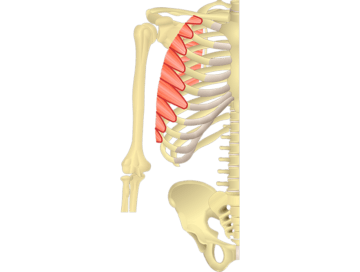
The serratus anterior is a muscle located on the lateral (side) surface of the ribcage. It extends from the upper eight or nine ribs to the scapula (shoulder blade). The primary function of the serratus anterior is to protract the scapula, which means pulling it forward and around the ribcage. This muscle plays a crucial role in stabilizing the scapula during various movements involving the arms, such as reaching and pushing, and is often referred to as the “boxer’s muscle” due to its importance in punching actions.
The trapezius is a large, triangular-shaped muscle located in the upper back and neck region. It extends from the base of the skull down to the thoracic spine and out to the shoulders. The primary function of the trapezius is to move and stabilize the shoulder blades, allowing you to raise and lower your shoulders, retract and rotate them, as well as tilt your head and neck backward.
The latissimus dorsi, commonly known as the “lats,” is a large, flat muscle located in the middle and lower back. It extends from the lower spine up to the humerus bone in the upper arm. The primary function of the latissimus dorsi is to adduct (pull toward the midline) and extend the arm at the shoulder joint.
The levator scapulae is a muscle located at the back and side of the neck. It runs from the upper cervical vertebrae to the scapula (shoulder blade). The primary function of the levator scapulae is to elevate the scapula, allowing you to shrug your shoulders upward. It also plays a role in tilting and rotating the neck, assisting in movements like turning your head to the side and tilting it to the same side.
The rhomboid minor is a muscle located in the upper back, between the spine and the scapula (shoulder blade). It runs from the lower cervical and upper thoracic vertebrae to the medial border of the scapula. The primary function of the rhomboid minor is to retract and stabilize the scapula, pulling it towards the spine.
The rhomboid major is a muscle located in the upper back, between the spine and the scapula (shoulder blade). It runs from the lower thoracic vertebrae to the medial border of the scapula. The primary function of the rhomboid major is to retract and stabilize the scapula, pulling it towards the spine. It works together with the rhomboid minor to support proper posture and shoulder movements, such as squeezing the shoulder blades together.
